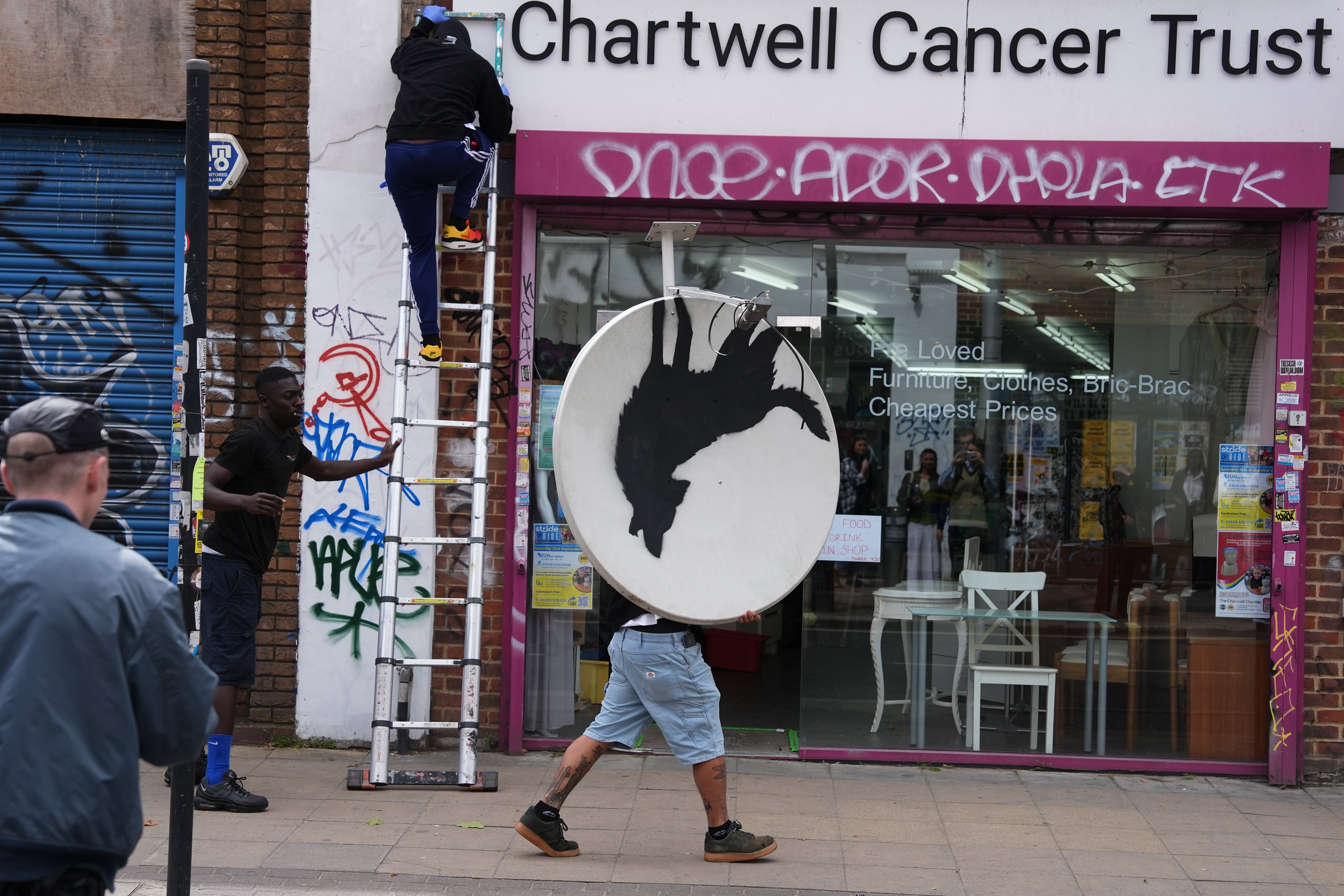Why the thieves who stole a Banksy may have made a huge mistake
Unless they happen to know a billionaire with a penchant for the artist, these criminals may have found themselves in possession of a completely worthless satellite dish, wites Chris Blackhurst


So, Banksy’s latest artwork – a wolf howling at the sky spraypainted onto a satellite dish – joins the other 52,000 items on Interpol’s stolen works of art database. Or does it? The thing is, you can never quite be sure when it comes to the world’s most famous graffiti artist.
In broad daylight, three men wrenched the disc that acted as the canvas for the stencil off a roof in Peckham. There was a bit of argy-bargy with a spectator but otherwise, that was it. Bold as brass, right there.
The work had only appeared hours previously. Now, presumably, it is hidden away, on its way to a collector who has a penchant for nicked Banksys or is being offered around the boozers of south London, or perhaps it’s adorning a fireplace somewhere – strange, having a satellite dish in your living room, but hey-ho. Or maybe it’s back with the secretive Banksy, the whole episode just another of his elaborate stunts.
Because what do you do with such an obviously purloined piece?
It’s easy to imagine the world’s currently most famous missing painting, Vermeer’s The Concert, residing on a basement wall in the lair of a billionaire somewhere. The gang, who took it from a museum in Boston in March 1990, also stole 12 other works. The gallery has left the spaces where they were hanging empty, in the hope they return.
It’s possible to imagine the collector’s desire for the Vermeer, last valued in 2015 at $250m. But a satellite dish off a wall in Peckham? The gang who took the Vermeer were professionals, disguised as policemen, almost certainly stealing to order.
The blokes who nabbed the Banksy made some attempt at hiding their faces, but they were photographed and to anyone who knows them, they were easily identifiable.
Neither is this the first time a Banksy has been seized in such a fashion. In December last year, a traffic “stop” sign adorned with three military helicopters mysteriously appeared – also, coincidentally, in Peckham. Soon afterwards, the work, interpreted as calling for a ceasefire in Gaza, vanished – taken down by two men, one of whom was bearing bolt-cutters, same as with the dish.
The police investigation of that incident continues. Two men were arrested and re-bailed, pending further inquiries.
Unless the threesome with the wolf are lovers of Banksy or know someone who is, they’re stuck. They can’t sell something that is so obviously known to be stolen.
If they’d taken it soon after it went up, under cover of darkness, no one would have been the wiser – they would have a valuable Banksy on their hands. Odd, for three lads to explain how they came to own it but nevertheless it would not be so famous, nor so obviously stolen.
This is different. In reality, they’re sitting on an object they can’t do anything with, except incriminate themselves. To all intents and purposes, it’s worthless.
That’s why museums and galleries do not always rush to claim for the theft of famous works. The Tate, for instance, has still not claimed for its stolen 1952 portrait of Francis Bacon by Lucian Freud, 36 years after its theft in Berlin. The gallery’s reasoning is that it hopes one day the picture will be recovered and, as it is so rare, there is no suitable replacement.
It’s true that the chances of it turning up now, after so many years, are slim. But if the Tate had claimed against the government, which operates the indemnity scheme, legal ownership would have passed from the gallery to the government.
It’s not clear if the Tate could claim for the value when it was taken or its later worth – the price of Freud’s work having soared in that period. At the time it was valued at £75,000, whereas today it would command tens of millions.
It’s a question that remains untested, and in case it should return, rather than find themselves pocketing just £75,000 and see the government own a painting worth many times that, the Tate would rather keep the legal title.
Most well-known works, unless they are stolen to order, languish. It’s quite likely the satellite dish will turn up somewhere. That is, if it was not Banksy himself who was responsible.






Join our commenting forum
Join thought-provoking conversations, follow other Independent readers and see their replies
6Comments